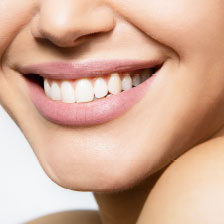 You use your toothbrush every day because you know how important it is to keep your teeth clean. You also know that proper oral hygiene prevents cavities, plaque buildup, and gum disease. If you brush twice a day for two minutes each time, you will spend about 24 hours per year brushing your teeth. As simple as a toothbrush seems, you may be surprised how it has evolved. Here are some fun facts about the history of the toothbrush.
You use your toothbrush every day because you know how important it is to keep your teeth clean. You also know that proper oral hygiene prevents cavities, plaque buildup, and gum disease. If you brush twice a day for two minutes each time, you will spend about 24 hours per year brushing your teeth. As simple as a toothbrush seems, you may be surprised how it has evolved. Here are some fun facts about the history of the toothbrush.
Historical Trivia of the Toothbrush
- Researchers have found that people in ancient times were concerned about oral hygiene. For example, the ancient Babylonians chewed on sticks from trees to clean their teeth and freshen their breath. These sticks resembled large toothpicks.
- Records indicate that chewing sticks were used in ancient Greece and Rome, too.
- Around 1600 B.C., the chewing stick evolved in China into the “chew stick.” The chew stick was about the size of a pencil. One end was pointed and used as a toothpick, while the other end was softened and acted as a rudimentary brush.
- During the Middle Ages, China was the first area of the world to develop a toothbrush with bristles. Early versions of the Chinese toothbrush consisted of hog’s hair attached to bamboo sticks.
- Monastic communities improved the toothbrush by utilizing oxen bones, instead of bamboo, and hair from a horse’s tail for bristles.
- In 1780, the first modern toothbrush was mass produced in England by William Addis.
- Electric toothbrushes were invented in Switzerland in 1939.
- In 1961, General Electronic developed a toothbrush that was both rechargeable and cordless.
Despite the fact that the toothbrush has greatly improved over the years, you still need routine dental cleanings and examinations every six months. Our doctors want to help you maintain optimum oral health. If it’s time for your dental cleaning, contact Grinnell Street Dental at (307) 672-7567 to schedule an appointment. We welcome patients from Sheridan, WY and the surrounding communities.







